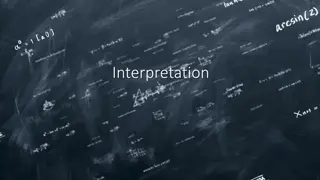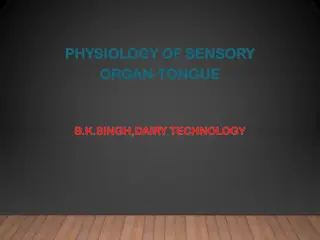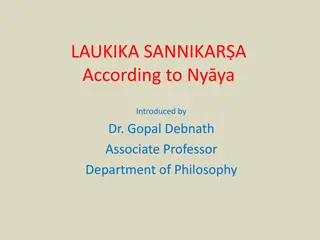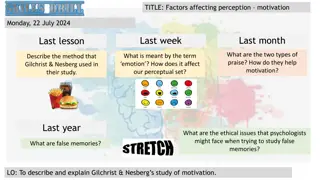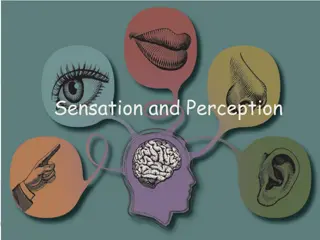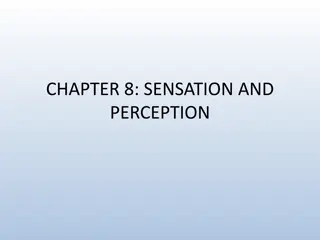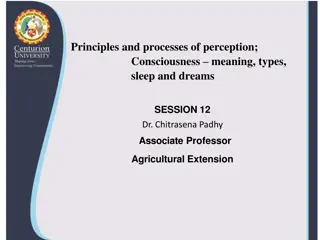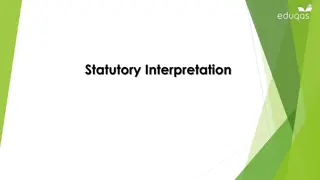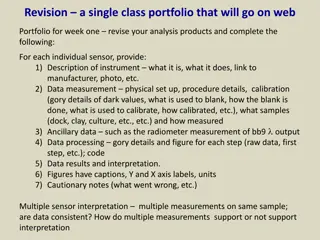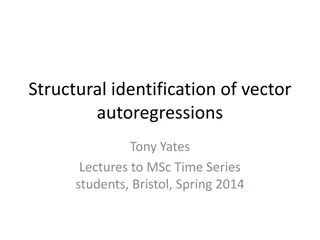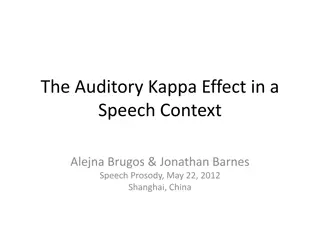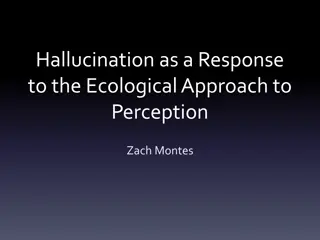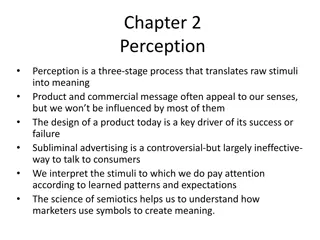Perception: Organization, Identification, Interpretation
Perception involves organizing, identifying, and interpreting sensory information to understand our environment. It is shaped by learning, memory, and attention, transforming low-level data into higher-level understanding effortlessly. Explore the process, models, components, and impacts of perception in our daily lives.
Download Presentation

Please find below an Image/Link to download the presentation.
The content on the website is provided AS IS for your information and personal use only. It may not be sold, licensed, or shared on other websites without obtaining consent from the author.If you encounter any issues during the download, it is possible that the publisher has removed the file from their server.
You are allowed to download the files provided on this website for personal or commercial use, subject to the condition that they are used lawfully. All files are the property of their respective owners.
The content on the website is provided AS IS for your information and personal use only. It may not be sold, licensed, or shared on other websites without obtaining consent from the author.
E N D
Presentation Transcript
StudyMafia.Org Preception Submitted To: Studymafia.org Studymafia.org Submitted By:
Table Contents Definition Introduction Process of Perception Bruner's Model Saks and John's Components Types of Perception Example of Perception Impact of Perception Pitfalls of Perception Conclusion 2
Definition Perception (from Latin perceptio 'gathering, receiving') is the organization, identification, and interpretation of sensory information in order to represent and understand the presented information or environment. 3
Introduction Perception is not only the passive receipt of these signals, but it is also shaped by the recipient's learning, memory, expectation, and attention, Sensory input is a process that transforms this low- level information to higher-level information. Perception depends on complex functions of the nervous system, but subjectively seems mostly effortless because this processing happens outside conscious awareness 4
Process of Perception The perceptual process is a sequence of steps that begins with the environment and leads to our perception of a stimulus and action in response to the stimulus. It occurs continuously, but you do not spend a great deal of time thinking about the actual process that occurs when you perceive the many stimuli that surround you at any given moment. Perception acts as a filter that allows us to exist and interpret the world without becoming overwhelmed by the abundance of stimuli. 5
Process of Perception The Environmental Stimulus The Attended Stimulus The Image on the Retina Transduction Neural Processing Perception Recognition Action 6
Bruner's Model When people encounter an unfamiliar target, they are very open to the informational cues contained in the target and the situation surrounding it. The first stage does not give people enough information on which to base perceptions of the target, so they will actively seek out cues to resolve this ambiguity. Gradually, people collect some familiar cues that enable them to make a rough categorization of the target. The cues become less open and selective. People try to search for more cues that confirm the categorization of the target. 7
Saks and John's Components The Perceiver: a person whose awareness is focused on the stimulus, and thus begins to perceive it. There are many factors that may influence the perceptions of the perceiver, while the three major ones include (1) motivational state, (2) emotional state, and (3) experience. The Target: the object of perception; something or someone who is being perceived. The Situation: the environmental factors, timing, and degree of stimulation that affect the process of perception. These factors may render a single stimulus to be left as merely a stimulus, not a percept that is subject for brain interpretation. 8
Types of perception There are also other senses that allow us to perceive things such as balance, time, body position, acceleration, and the perception of internal states: Vision Touch Sound Taste Smell 9
Example of Perception The process of transforming the light that falls on your retinas into an actual visual image happens unconsciously and automatically. The subtle changes in pressure against your skin that allow you to feel objects occur without a single thought. 10
Impact of Perception The environmental stimulus: The world is full of stimuli that can attract attention through various senses. The attended stimulus: The attended stimulus is the specific object in the environment on which attention is focused. The image on the retina: This involves light actually passing through the cornea and pupil and onto the lens of the eye. Transduction: The image on the retina is then transformed into electrical signals in a process known as transduction. 11
Impact of Perception Neural processing: The electrical signals then undergo neural processing. The path followed by a particular signal depends on what type of signal it is (i.e. an auditory signal or a visual signal). Perception: In this step of the process, you perceive the stimulus object in the environment. Recognition: Perception doesn't just involve becoming consciously aware of the stimuli. Action: The action phase of perception involves some type of motor activity that occurs in response to the perceived and recognized stimulus. 12
Pitfalls of Perception Spatial neglect syndromes, which involve not attending to stimuli on one side of the body, Prosopagnosia, a disorder that makes it difficult to recognize faces. Aphantasia, a condition characterized by an inability to visualize things in your mind. Schizophrenia, which is marked by abnormal perceptions of reality. 13
Conclusion Perception is the process by which people organize and obtain meaning from the sensory stimuli they receive from the environment. It might not be the reality, its only the meaning that a person gives to the environment. 14
References Google.com Wikipedia.org Studymafia.org Slidespanda.com
Thanks To StudyMafia.org


